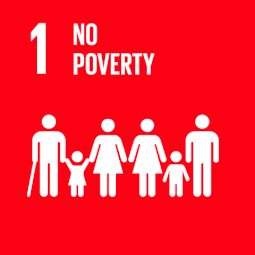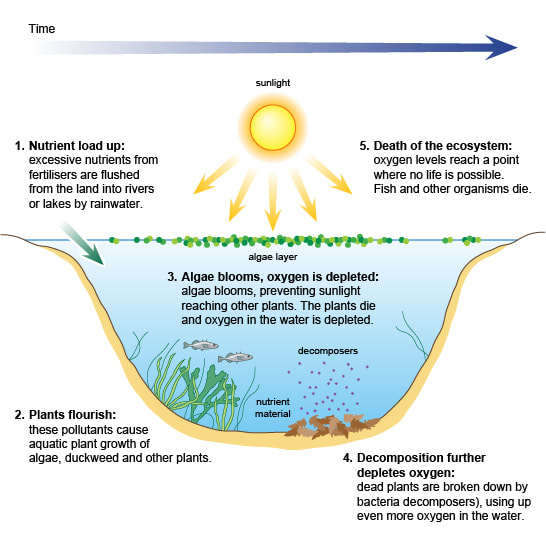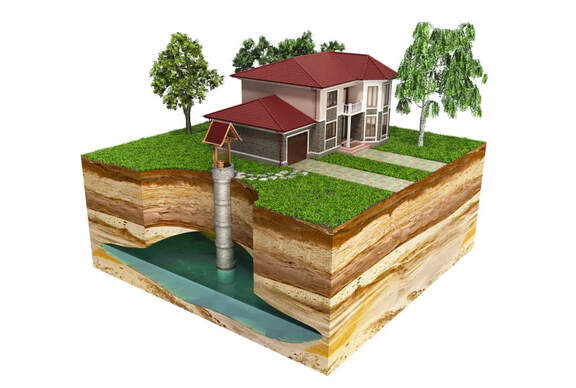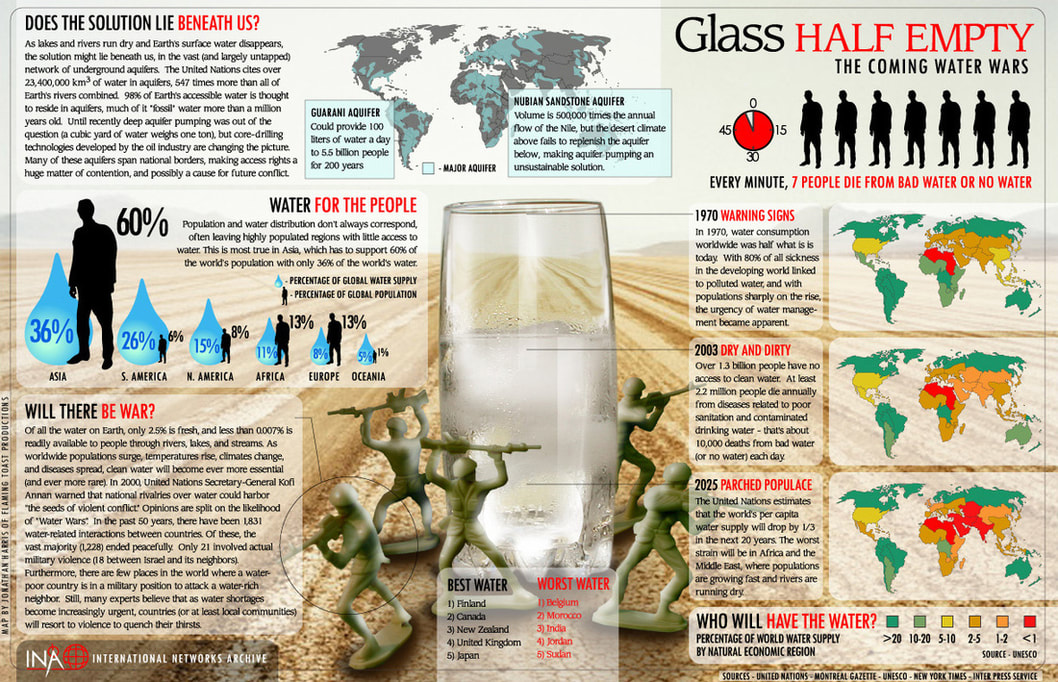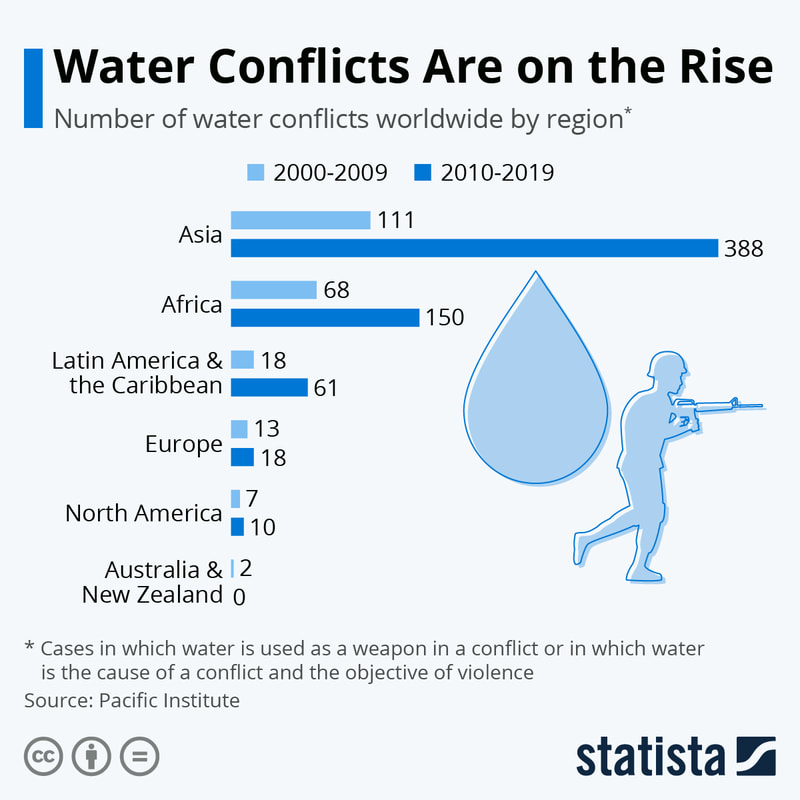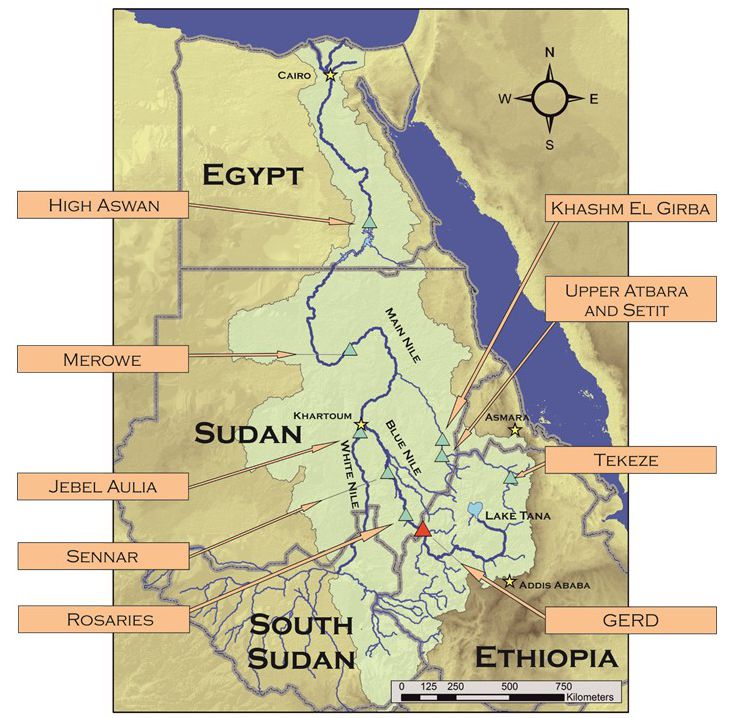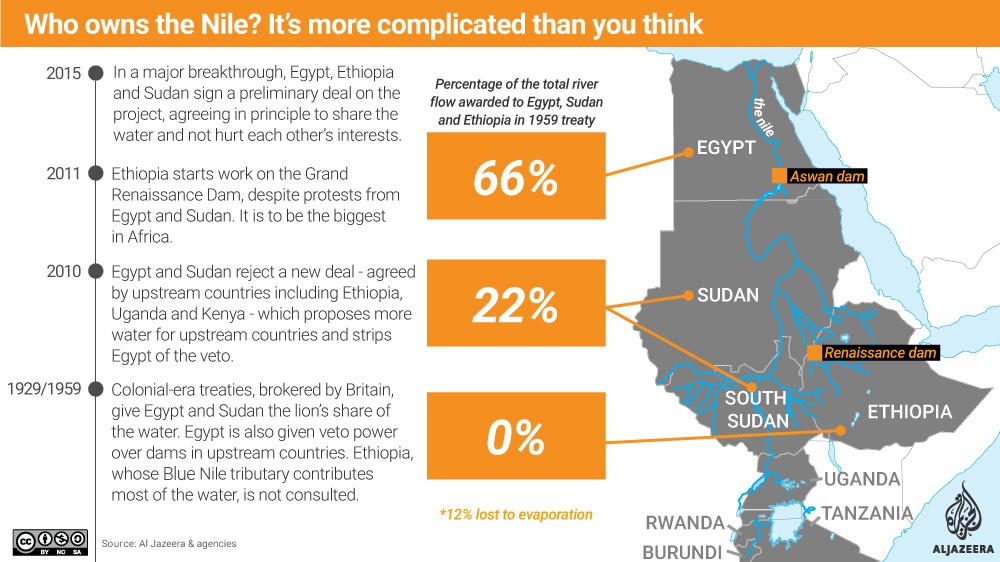What you'll need to know...
KEY CONCEPT - The varying power of different actors in relation to water management issues:
Physical and economic water scarcity, and the factors that control these including the causes and impacts of droughts; the distinction between water quantity and water quality
Environmental consequences of agricultural activities on water quality, to include pollution (eutrophication) and irrigation (salinization)
• Detailed examples to illustrate the role of different stakeholders
Growing human pressures on lakes and aquifers, including economic growth and population migration
Internationally shared water resources as a source of conflict
• Case study of one internationally shared water resource and the role of different stakeholders in attempting to find a resolution
Physical and economic water scarcity, and the factors that control these including the causes and impacts of droughts; the distinction between water quantity and water quality
Environmental consequences of agricultural activities on water quality, to include pollution (eutrophication) and irrigation (salinization)
• Detailed examples to illustrate the role of different stakeholders
Growing human pressures on lakes and aquifers, including economic growth and population migration
Internationally shared water resources as a source of conflict
• Case study of one internationally shared water resource and the role of different stakeholders in attempting to find a resolution
Objective: To examine the factors that control water scarcity including the causes and impacts of droughts; the distinction between water quantity and water quality.
Task 1 - Complete the first task on the worksheet above by using the first video (water in the Anthropocene) below.
Task 2 - Complete the second task on the worksheet above by using the second video (water scarcity) below
Extension: Fast facts & TOK - Watch the third video below (water crisis) that gives you the wider picture. What criticisms could you make of this type of video?
Task 2 - Complete the second task on the worksheet above by using the second video (water scarcity) below
Extension: Fast facts & TOK - Watch the third video below (water crisis) that gives you the wider picture. What criticisms could you make of this type of video?
|
|
|
|
Further reading (optional HL) - Click on this link to download a PDF document from 'Population Action International'.
a. Make a note of the classifications of 'water scarce' and 'water stressed'.
b. How many people globally live under either of the two conditions above?
c. Where are most water scare/stressed countries found and why?
d. What role does agriculture play?
e. What role does urbanisation play?
f. What role does industrial & domestic water usage have in water stress issues?
g. How can future water scarcity issues impact on gender disparities?
The causes of droughts...
Task 1 - Complete the worksheet beneath using the resources on this page to help you. Before you start on the climatic tasks, be sure to check out the two explanation videos beneath.
The second video below gives you a little more information on the ITCZ and an overview of atmospheric circulations. Even though it focuses on deserts, it will help you to understand why areas of the earth are naturally arid and where drought events can occur.
|
|
|
Click the tab below to access a ready completed case study document on the 2011 Horn of Africa drought event. This outlines the key causes and effects of this devastating natural disaster.
Task 2 - Use two different colours to highlight the text that shows elements of physical and economic water scarcity as core reasons for the drought event.
Task 2 - Use two different colours to highlight the text that shows elements of physical and economic water scarcity as core reasons for the drought event.
Task 3 - Study this Al Jazeera news article from 2017 carefully and pay particular attention to how drought mitigation schemes can work with a particular focus on the Ethiopian approach.
Exam Corner:
Examine the factors that control the causes and impacts of a drought event (10)
Suggest three schemes that allows for the mitigation of drought events (2+2+2)
There has been considerable research recently surrounding water quality and water quantity. The information pack below is taken directly from a blog post written here by Daniel Stellar. It has been copied directly as most schools won't allow access to blogs on the internal system.
Task 1 - Read the information carefully and use a highlighter tool to pick out key aspects of the text.
Task 2 - Explain the nexus relationship between water quality and quantity and they key obstacles to future safeguarding of this resource.
Task 1 - Read the information carefully and use a highlighter tool to pick out key aspects of the text.
Task 2 - Explain the nexus relationship between water quality and quantity and they key obstacles to future safeguarding of this resource.
Environmental consequences of agricultural activities...
Objective: To study the effects of pollution (eutrophication) and irrigation (salinization) on water quality and the examine the role of different stakeholders
Part 1 - Salinization...
Task sheet for this section is found by clicking on the blue tab below
Task 1 - Watch the first video to the right hand side and note the causes and effects of salinization on the Murray Darling basin in Australia as well as what is being done to combat the problem. This task will lead on to the task below....
To get the full explanation of why salinization is such an issue in Australia, please watch the second video to the right.
•PPM = Parts per million
|
|
|
Part 2 - Eutrophication...
Task 2 - Turn to page 494 of Integrated Approach and Copy Figure 16.50 giving it a suitable title. Alternatively, make a copy of the diagram below from the BBC Bitesize site.
Task 3 - Lake Erie, USA/Canada - Read this Guardian newspaper article and watch the video below. Then, summarise:
*The main causes & effects of eutrophication on Lake Erie (being clear of the link between the degradation of the lake and the economic activity close by).
* The reasons why management of the waters of Lake Erie is needed
Task 2 - Turn to page 494 of Integrated Approach and Copy Figure 16.50 giving it a suitable title. Alternatively, make a copy of the diagram below from the BBC Bitesize site.
Task 3 - Lake Erie, USA/Canada - Read this Guardian newspaper article and watch the video below. Then, summarise:
*The main causes & effects of eutrophication on Lake Erie (being clear of the link between the degradation of the lake and the economic activity close by).
* The reasons why management of the waters of Lake Erie is needed
Growing human pressures on aquifers & lakes...
Objective: To find out how economic growth and population migration can contribute to pressure on lakes and aquifers.
In the previous piece of work, we have seen how the pressures of population growth and agriculture around Lake Erie have caused significant problems in terms of the degradation of the quality of water in the lake system (eutrophication). We now switch our attention to those growing human pressures on water supplies deep underground, also known as aquifers.
In the previous piece of work, we have seen how the pressures of population growth and agriculture around Lake Erie have caused significant problems in terms of the degradation of the quality of water in the lake system (eutrophication). We now switch our attention to those growing human pressures on water supplies deep underground, also known as aquifers.
|
Task 1 - Click on the image to the right and answer the following questions:
i. Define an aquifer ii. What are the two types of aquifers? iii. Outline how aquifers are used. iv. Outline the ways in which aquifers are being impacted by human factors. Task 2 - Focus on the Great Artesian Basin, Australia (note link to salinization). Watch the video to the right and take notes as follows: * The location and scale of the Great Artesian Basin (2:10 - 7:30) * The history of population dependency on the Great Artesian Basin (7:30 - 12:30) * The economic development dependent on the Great Artesian Basin (17:45 - 23:00) * The reasons why management of the Great Artesian Basin is needed (22:55 - 30:00). |
|
Explain two examples of where growing human pressures has a detrimental effect upon an aquifer. [3+3]
Replace 'an aquifer' above with ' a lake'
"Hydropolitics" - The rise of internationally shared water resources as a source of conflict...
Objective: To study one internationally shared water resource and to discover the role of different stakeholders in attempting to find a resolution
|
Starter: Click on the infographic above to enlarge and study the content followed by reading this BBC Future article on 'hydopolitics'. You should be able to do a little synthesis on the work above linking in with work on population growth, population density and the SDG's.
Task 1 - Click here to access an international water conflict map. You will need to modify the search criteria as follows: In 'Conflict Type' - select 'all' In 'Date Range' - select '2010 to present' In the search box, type 'water' and then press return. You will have a list of water related conflicts over the last 9 years each on place marked on a Google map. Use this information together with the Statista chart to the right to answer the following question: Describe and give some reasons for the global distribution of water conflict since 2010 |
Task 2 - Our case study for internationally shared water resource will be the River Nile. Your bank of resources can be found below to build up your case study of the issues. Each resource shows an important consideration when trying to make sense of the issues surrounding the water conflict. Synthesis required!
|
|
|
Task 3
Using all the information above in some shape or form, complete a comprehensive note taking form that aims to answer the two questions as follows:
a (i). Summarise the importance of the River Nile for different stakeholders in the different (calculate the number of countries in the Nile basin) countries.
a (ii). Detail who these stakeholders are (power) and how they are affected by water conflict in this drainage basin.
b. Should the Grand Ethiopian Renaissance Dam be built? Consider the historical issues facing Ethiopia such as drought and famine as well as its potential to lift itself out of poverty through improved agriculture as well as significant investment in high technology. Also, consider the impacts on the Ethiopian people as well as those in their neighboring countries.
Using all the information above in some shape or form, complete a comprehensive note taking form that aims to answer the two questions as follows:
a (i). Summarise the importance of the River Nile for different stakeholders in the different (calculate the number of countries in the Nile basin) countries.
a (ii). Detail who these stakeholders are (power) and how they are affected by water conflict in this drainage basin.
b. Should the Grand Ethiopian Renaissance Dam be built? Consider the historical issues facing Ethiopia such as drought and famine as well as its potential to lift itself out of poverty through improved agriculture as well as significant investment in high technology. Also, consider the impacts on the Ethiopian people as well as those in their neighboring countries.



